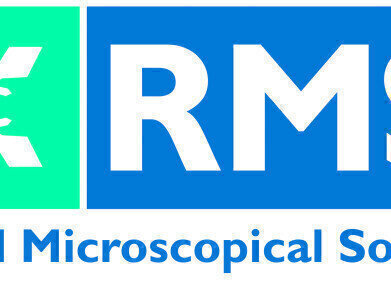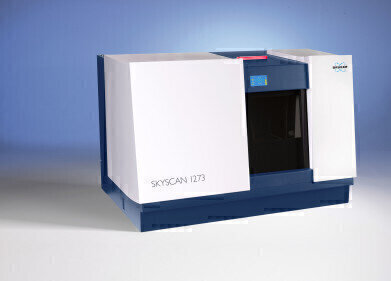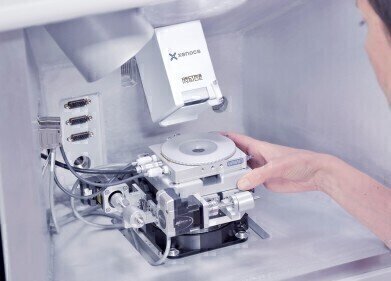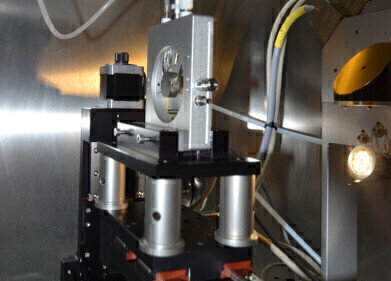-
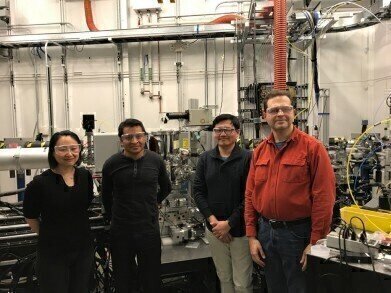 Beamline 8-ID-E and Linkam stage users (L to R): Wanyi Nie, Aditya Mohite, Hsinhan (Dave) Tsai and Joe Strzalka. The Linkam stage is inside the vacuum chamber visible in between Aditya and Dave. The box behind Aditya's right shoulder is the GIWAXS detector. The x-ray beam comes in from the right side of the picture. The flight path for the beam is partially obscured by Dave and Joe.
Beamline 8-ID-E and Linkam stage users (L to R): Wanyi Nie, Aditya Mohite, Hsinhan (Dave) Tsai and Joe Strzalka. The Linkam stage is inside the vacuum chamber visible in between Aditya and Dave. The box behind Aditya's right shoulder is the GIWAXS detector. The x-ray beam comes in from the right side of the picture. The flight path for the beam is partially obscured by Dave and Joe.
X-Ray
Report on Temperature Controlled Stage Use by Researchers Studying Grazing Incidence X-ray Scattering Measurements
Jun 12 2018
Linkam Scientific Instruments, report on how groups of scientists at Argonne National Laboratory are making grazing-incidence x-ray scattering measurements using a Linkam HFSX350 thermal stage on Beamline 8-ID-E under the guidance of the Time-Resolved Research group.
Dr Joseph Strzalka is a physicist performing time-resolved research in the X-Ray Science Division at Argonne National Laboratory in Illinois, USA. Beamline 8-ID-E hosts a program in nanoscale morphology and kinetics anchored by a dedicated instrument for grazing-incidence x-ray scattering (GIXS). Many of the user groups are interested in the structure of polymer thin films, self-assembly of nanomaterials and organic optoelectronic materials.
Once the sample is aligned, GIXS data requires a single incident angle without scanning, and at the synchrotron needs only a short exposure, one second or less, to obtain high quality data. This makes it a great match for in situ studies. Applying in situ thermal annealing studies can help unravel this interrelationship.
Dr Strzalka described how they are now working with one of Linkam's stages, the HFSX350 model. “Our users were interested in capabilities our current stage could not offer: temperatures below ambient, quenching for crystallisation studies, more stable and reliable operation, and a smaller thermal expansion.”
Julie Albert's group from Tulane University introduced the idea of a Linkam stage to beamline 8-ID-E. They already had a Linkam stage in their lab for their optical microscope. However, they wanted to complement their optical crystallisation studies of organic electronic materials with in situ GIWAXS (grazing-incidence wide angle x-ray scattering) characterisation of the film structure. The second group to use the system this year Aditya Mohite’s group from Los Alamos National Lab and Rice University. They study hybrid organic-inorganic perovskite thin films for high-performance solar cells and other applications.
Plans are under way for more work with the system. Dr Strzalka described his plans: “In May, I’ll be testing out connecting the stage to circulating water. That will let us use more of the temperature range of the stage. Then, for the second cycle (June-August), we have some other user groups who need temperatures up to 300°C. The stage is rated to +350°C, but for temperatures greater than 200°C, it requires circulating cooling water, something we have not yet tested. We also have plans to use the Linux-based software development kit to integrate the Linkam stage controls with our beamline controls.”
Digital Edition
Lab Asia 31.2 April 2024
April 2024
In This Edition Chromatography Articles - Approaches to troubleshooting an SPE method for the analysis of oligonucleotides (pt i) - High-precision liquid flow processes demand full fluidic c...
View all digital editions
Events
Apr 28 2024 Montreal, Quebec, Canada
May 05 2024 Seville, Spain
InformEx Zone at CPhl North America
May 07 2024 Pennsylvania, PA, USA
May 14 2024 Oklahoma City, OK, USA
May 15 2024 Birmingham, UK
